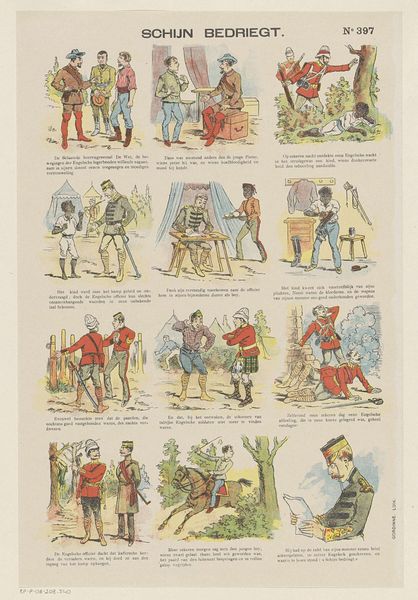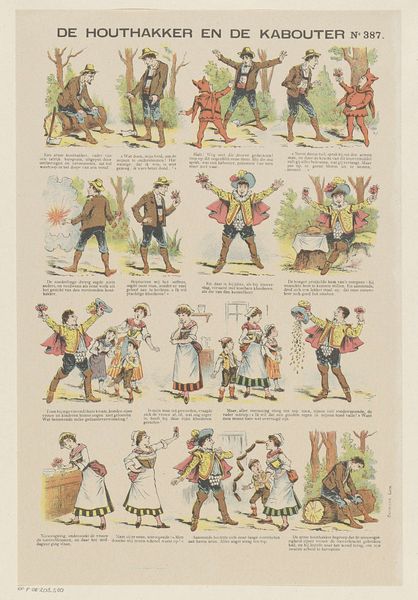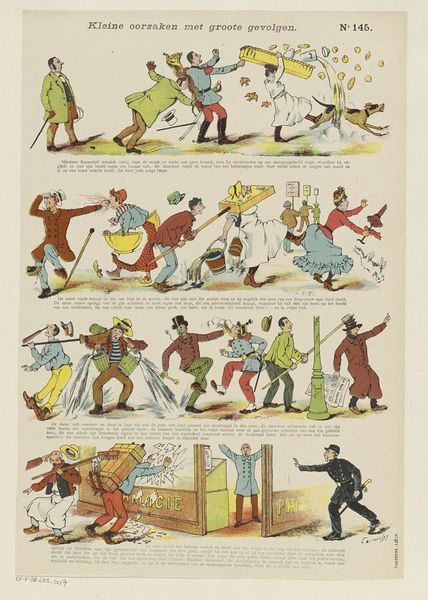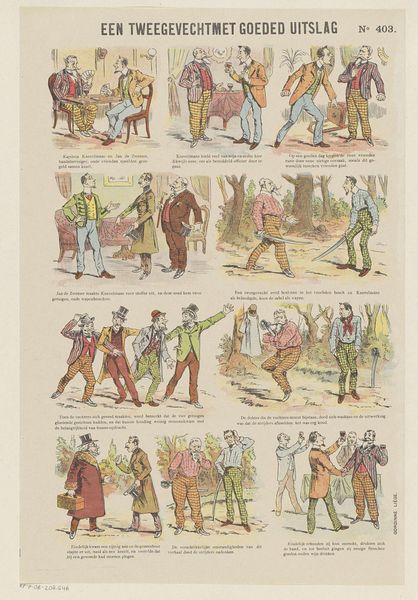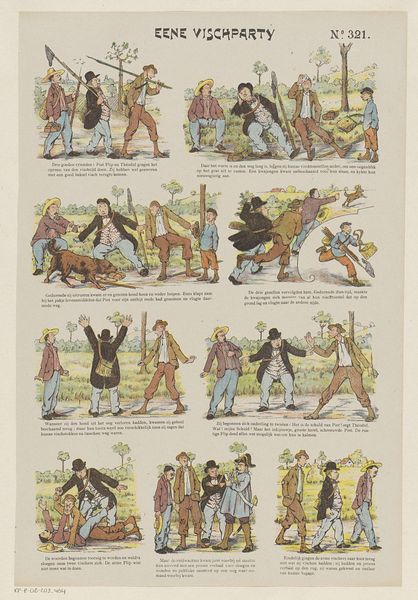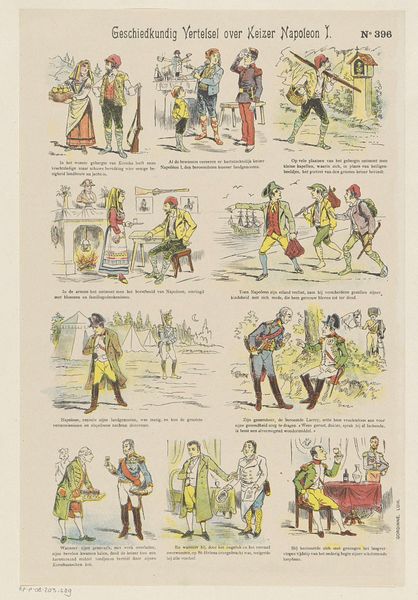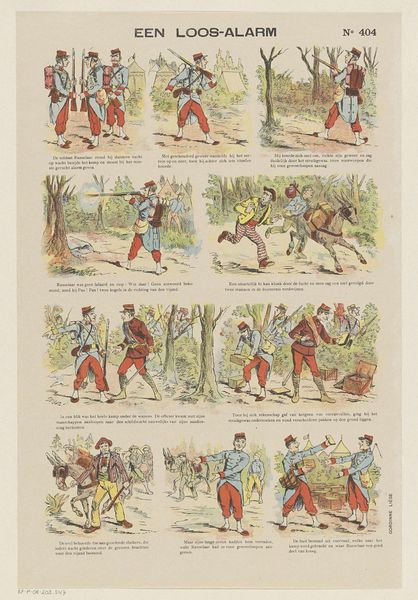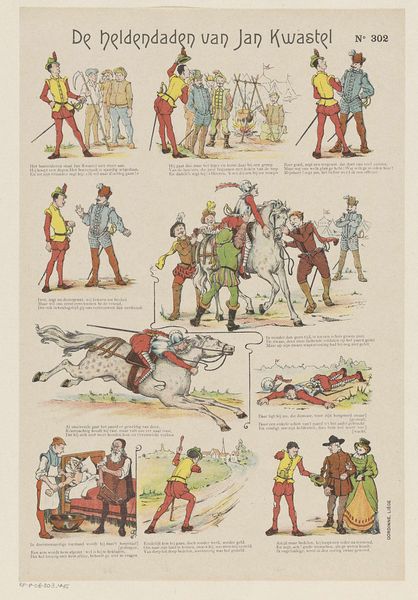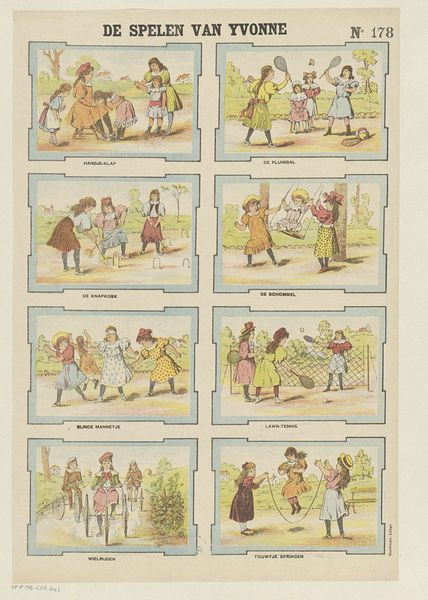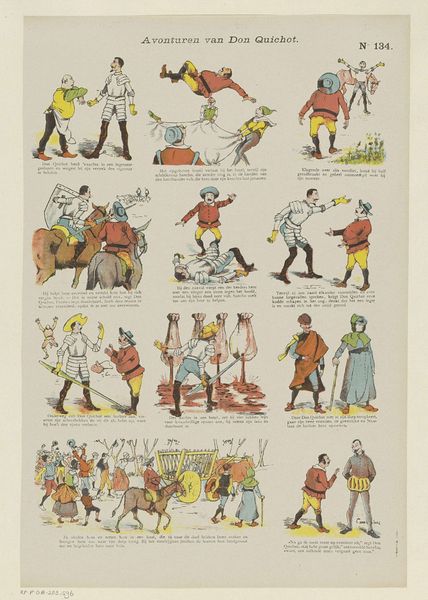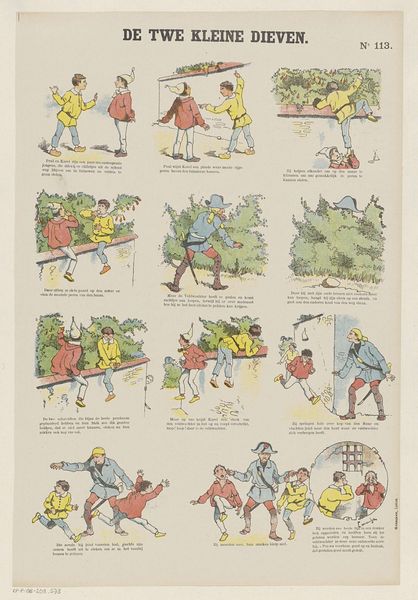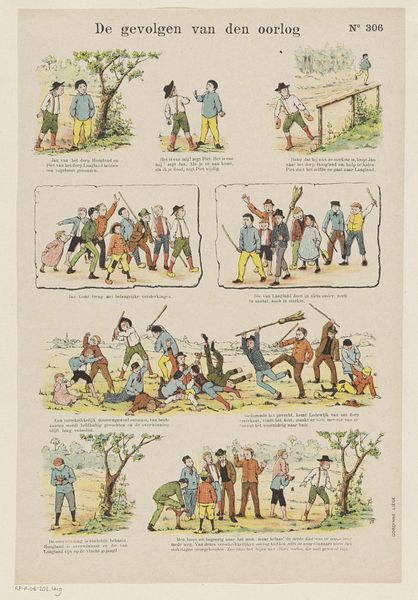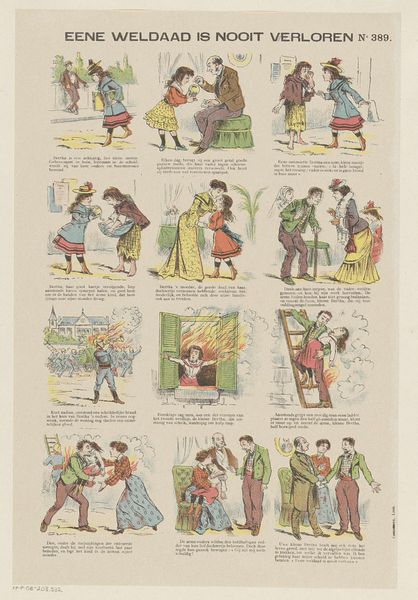
graphic-art, print
#
graphic-art
#
narrative-art
# print
#
folk-art
#
comic
Dimensions: height 400 mm, width 268 mm
Copyright: Rijks Museum: Open Domain
Curator: Here at the Rijksmuseum, we have before us an intriguing graphic print, titled "De angst laat zich niet gebieden," which translates to "Fear Cannot be Commanded." It was created sometime between 1894 and 1959. Editor: My first impression is a chaotic tapestry of brightly colored, cartoon-like vignettes, radiating both anxiety and an almost humorous energy. The composition seems deliberately fragmented. Curator: Indeed. Observe how the artist segments the composition into a series of narrative panels, akin to a comic strip. Each frame depicts a different scenario where individuals encounter apparitions, seemingly ghosts, triggering varied responses ranging from terror to bravery. Note the recurring figure of the ghost in each tableau, rendered with a simple, almost childlike form. The composition balances repetition and variation to examine a central theme of mastering one's anxieties. Editor: And each of these figures is interesting; they are everyday people responding to circumstances out of their control, so this becomes a depiction of dealing with that universal, societal fear—specifically of that period. Fear is a social construct but these fears of specters could mirror real-world problems relating to race, class, gender, and overall social stability within this historical moment. Curator: The linearity encourages a structured reading experience, a progression of encounters building towards... what? What is the end goal? A cohesive symbolic conclusion, perhaps? The chromatic scale remains relatively constant in this print. Note that all the scenes and characters feature balanced palettes using earth tones. This suggests there could be thematic or symbolic relevance through repetition and artistic structure. Editor: I would argue against seeking a fixed conclusion or "end goal," as that might imply that such fears can be neatly overcome, when society as a whole often finds a different answer for different citizens. The work's true value might reside more in raising complex questions of fear itself than delivering simple solutions, as seen through each figure's expressive poses or tense interactions throughout. Curator: Perhaps. Despite my initial impression, it now offers us insight into individual and collective fears that endure regardless of time and place. Editor: Absolutely; in that sense it creates something strangely current for an ostensibly folk artwork.
Comments
No comments
Be the first to comment and join the conversation on the ultimate creative platform.
